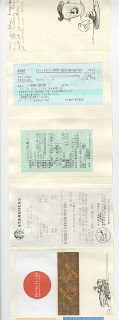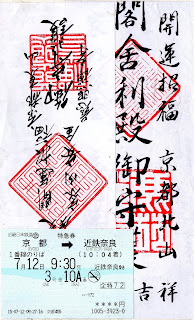‘Interior’ is defined as “situated within or inside; relating to the
inside; inner.” As it relates to this
project, there are two salient points about this definition. The first is that what a person, place, or
thing is situated inside of is not a
defining quality of ‘interior’. To be an
interior does not require a physical manifestation. In the exclusion of physicality as a defining
characteristic, we are open to suggest that an interior need not have
such. The second noteworthy point in the
definition of interior is the appearance of the word ‘within’. Within means inside, but its meaning is not
restricted to inside of a physical or experiential something; it can also be
used in relationship with time, a something exists or happens within a period
of time. Another relevant, if not intentional,
truth about the word ‘within’ is that it is a compound of ‘with’ and ‘in’. It is possible that this holds no historical
value, but it is nonetheless true and valid in the context of this work. Interior is not only ‘in’, but ‘in’ and ‘with’ and that reverberates in the
ways in which I consider the ‘Interior Space’ of our study and travels in
Japan. Coming back to the description
for this course, ‘we will not learn about Japan by traveling there, but we will
learn from and with Japan.
Perceptions of Interior Space, as it relates to travel, range
from the Obvious, to the Reinterpreted, to the Conceptual or Experiential. The Obvious includes the physical structures
we as travelers inhabit or visit, examples from our travels include: hotel
rooms, museums, trains, restaurants and temples. Reinterpreted Interior Space of travel
includes gardens, neighborhoods and sacred sites. Finally, the Conceptual or Experiential
Interior Spaces of travel for the purposes of this paper are groups and
specific activities.
This project seeks to create a representation of each of
these types of spaces using four examples.
The representative spaces will be both three dimension and flat. Their flatness speaks to the superficiality
of a recreated experience. A
manufactured sensory representation of an experience will never achieve the
authenticity we desire in trying to recreate memories. Playing on the idea of the stereoscopic views
of vacation destinations found by looking into a View-Master® I created a box
to represent a small room with wall screens that can be changed to represent
the four different example ‘Interior Spaces’ from our travels in Japan. The ‘Interior Spaces’ depicted are ‘Hotel
Rooms as Interior Space’ as an example from the Obvious category; ‘Kyoto (City)
as Interior Space’ and ‘Fushimi Inari as Interior Space’ examples of the
Reinterpreted category; finally, ‘Class Group as Interior Space’ is an example
of Conceptual/Experiential category.
By lifting the box to your face, you block out other views, leaving you peering into a room surrounded by photographic imagery from the study trip. The box itself is made specific to Japan by its construction with washii tape and its vermilion color, which is a reference to the ubiquitous hue that appears prominently at many of the Japanese landmark sites we visited including the torii at Fushimi Inari, the structures and gates at Sanjusangendo, the pagoda at Kiyomizu-dera, as well as at the Daito, or Great Pagoda at Danjogaran in Koyasan. The interior of the box is inspired by Japanese wall screens that often tell a story or a history of a place and the tatami ‘floor’ acts as an additional visual reminder of our regular encounters with this traditional interior design element.
By lifting the box to your face, you block out other views, leaving you peering into a room surrounded by photographic imagery from the study trip. The box itself is made specific to Japan by its construction with washii tape and its vermilion color, which is a reference to the ubiquitous hue that appears prominently at many of the Japanese landmark sites we visited including the torii at Fushimi Inari, the structures and gates at Sanjusangendo, the pagoda at Kiyomizu-dera, as well as at the Daito, or Great Pagoda at Danjogaran in Koyasan. The interior of the box is inspired by Japanese wall screens that often tell a story or a history of a place and the tatami ‘floor’ acts as an additional visual reminder of our regular encounters with this traditional interior design element.








































